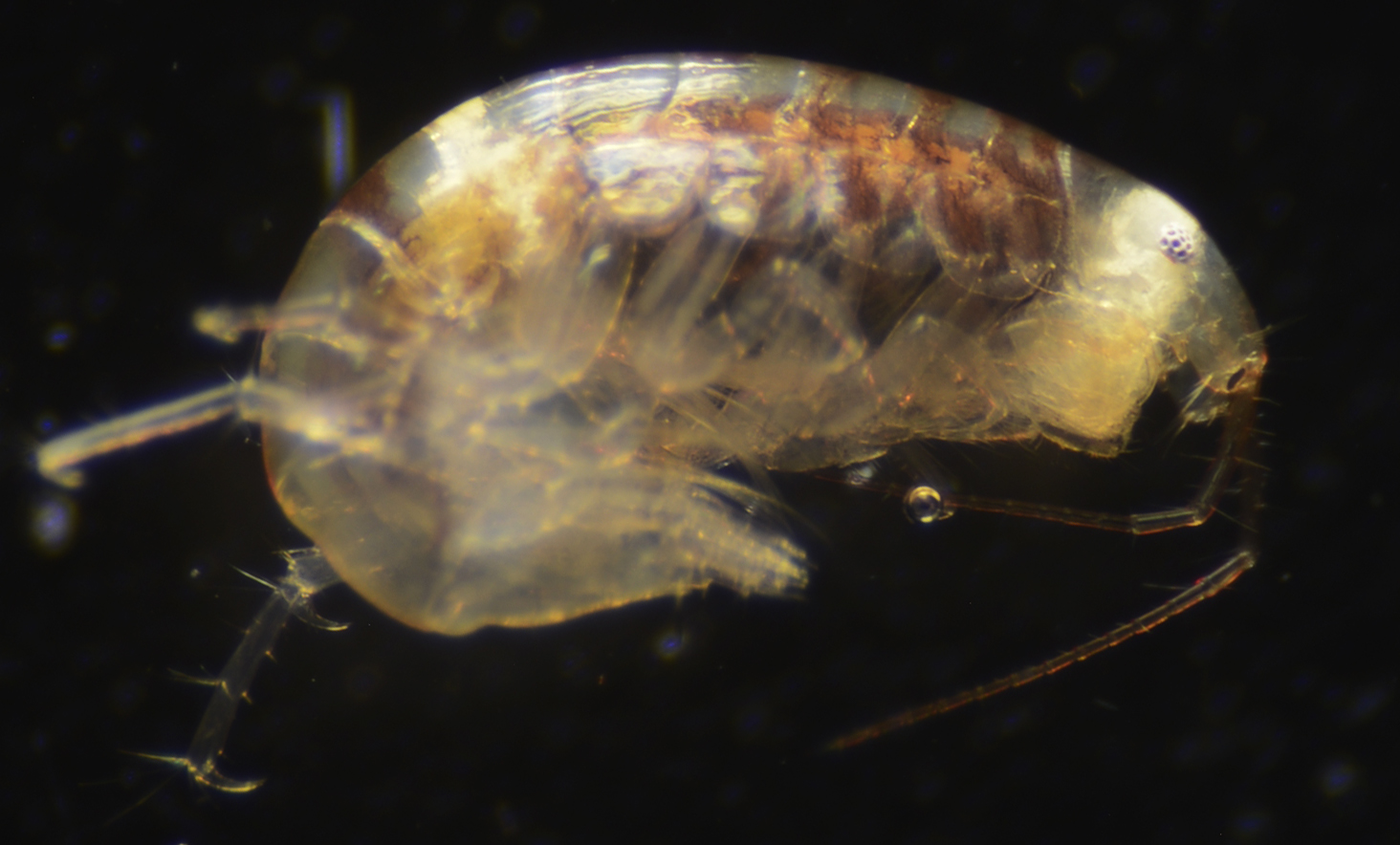An amphipod specimen was collected from among holdfasts of the brown alagae (Undaria pinnatifida (Harvey) Suringar and Saccharina longissima (Miyabe) Yotsukura et Druehl) in the intertidal zone of Oshoro Bay, Hokkaido, Japan, about 43°12&min;N, 140°51&min;E, on 11 May 2015 by Yuki Tanabe, then photographed and fixed in 99% EtOH by Shinri Tomioka. DNA was extracted from the anterior half of the body using the silica method (Boom et al. 1990) with some modifications. Extracted DNA was dissolved in 30 µl of deionized water and has been preserved at –20°C. Remaining morphological voucher specimen has been deposited at the Hokkaido University Museum under the catalogue number ICHU2130462 (contact: Dr. Hiroshi Kajihara, kazi@mail.sci.hokudai.ac.jp). PCR amplification was attempted for four gene markers, using the primer pairs LoboF1 (5′-KBTCHACAAAYCAYAARGAYATHGG-3′) and LoboR1 (5′-TGTTTYTTYGGWCAYCCWGARGTTTA-3′) (Lobo et al. 2013) for the mitochondrial cytochrome c oxidase subunit I gene (COI), 16S ar-L (5′-CGCCTGTTTATCAAAAACAT-3′) and br-H (5′-CCGGTCTGAACTCAGATCACGT-3′) (Palumbi et al. 1991) for the mitochondrial 16S rRNA gene, H3aF (5′-ATGGCTCGTACCAAGCAGAC-3′) and aR (5′-ATATCCTTRGGCATRATRGTGAC-3′) (Colgan et al. 1998) for the nucleus-encoded histone H3 , and LSU5 (5′-ACCCGCTGAAYTTAAGCA-3′) and LSU3 (5′-TCCTGAGGGAAACTTCGG-3′) (Littlewood 1994) for the nucleus-encoded 28S rRNA gene. PCR products were visualized by electrophoresis in 1% agarose gel. Of the four gene markers attempted, only H3 was amplified. The PCR was performed by a thermal cycler, 2720 Thermal Cycler (Applied Biosystems), in a 20-µl reaction volume containing 1 µl of template total DNA (approximately 10–100 ng) and 19 µl of premix made with 632-µl deionized water, 80-µl Ex Taq Buffer (TaKara Bio), 64-µl dNTP (each 25 mM), 8-µl each primer (each 10 µM), and 0.1-µl TaKara Ex Taq (5 U/µl,TaKara Bio). Thermal cycling condition comprised an initial denaturation at 95°C for 30 sec; 30 cycles of denaturation at 95°C for 30 sec, annealing at 45°C for 30 sec, and elongation at 72°C for 45 sec; and a final elongation at 72°C for 7 min.
The PCR products of the histone H3 gene was purified with the silica method (Boom et al. 1990). Both strands were sequenced with a BigDye® Terminator v3.1 Cycle Sequencing Kit (Applied Biosystems) following the manufacturer's protocol, using the same primer set as the initial PCR amplification. Sequencing was performed with ABI Prism 3730 DNA Analyzer (Applied Biosystems). Base calling from chromatogram data and calculation of genetic distance were performed with MEGA v5.2 software (Tamura et al. 2011).
Results
Phylum Arthropoda
Class Malacostraca
Order Amphipoda
Gammaridea sp. (Fig. 1)

Fig. 1 Gammaridea sp. (ICHU2130462), photograph taken in life.
References
Boom, R., Sol, C. J., Salimans, M. M., Jansen, C. L., Wertheim-van Dillen, P. M., and Van der Noordaa, J. 1990. Rapid and simple method for purification of nucleic acids. Journal of Clinical Microbiology 28: 495–503.
Lobo, J., Costa, P. M., Teixeira, M. A. L., Ferreira, M. S. G., Costa, M. H, and Costa, F. O. 2013. Enhanced primers for amplification of DNA barcodes from a broad range of marine metazoans. BMC Ecology 13:34. DOI: 10.1186/1472-6785-13-34.
Palumbi, S., Martin, A., Romano, S., McMillan, W. O., Stice, L., Grabowski, G. 1991. The Simple Fools Guide to PCR, Ver. 2. Department of Zoology and Kewalo Marine Laboratory, University of Hawaii, Honolulu, 45 pp.
Tamura, K., Peterson, D., Peterson, N., Stecher, G., Nei, M., and Kumar, S. 2011. MEGA5: molecullar evolutionary genetics analysis using maximum likelihood, evolutionary distance, and maximum parsimony methods. Molecular Biology and Evolution 28: 2731–2739.
AppendixH3 sequence from ICHU2130462 identidied as Gammaridea sp.
TGCTCGTAAATCTGCCCCTGCTACAGGAGGTGTGAAGAAGCCTCACAGGTACAGGCCCGGAACTGTCGCTCTTCGTGAGATCCGTCGTTACCAGAAATCCACCGAGCTCCTCATCCGCAAGCTGCCTTTCCAGCGTCTTGTCCGTGAGATTGCTCAGGATTTCAAGACTGATCTCCGTTTCCAGTCTTCAGCTGTCATGGCTCTTCAGGAGGCATCTGAGGCTTACCTCGTTGGTCTTTTCGAAGATACCAACTTGTGCGCCATCCACGCCAAGCGT